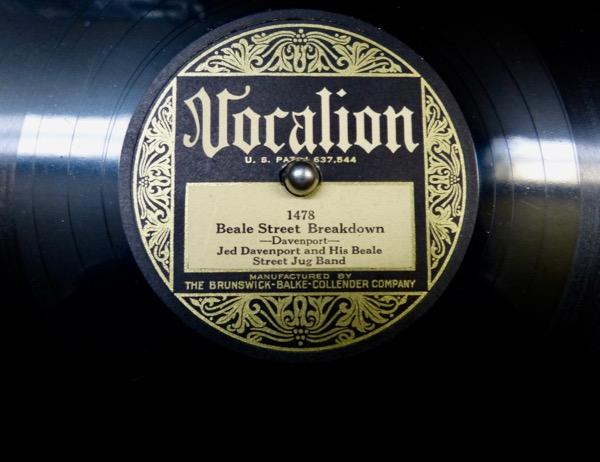The first guy who says they sound "warmer" and "more natural" than digital or CDs gets a free kick in the you-know-whats from me!
The Sweet Sound of 78s

It was the sort of music fest that I prefer: a manageably-sized gathering of fans assembled for a series of intimate shows catering to a specific niche. The event was a celebration of the 60th anniversary of the first recordings made by John Fahey, a cult musician born and raised in Takoma Park. The niche was “fingerstyle,” an approach to guitar playing rooted in American folk and blues traditions, but in this case informed by Fahey’s interest in modern classical music from composers like Bartok, Ives, and Stockhausen.

Though the shows I attended at the fest were uniformly great, a highlight was a side trip organized by my friend Josh Rosenthal of Tompkins Square records to the home of legendary record collector Joe Bussard. Joe is well known in the wax collecting world for his library of extremely rare 78 rpm blues, jazz, and country recordings. Up until 1970, Bussard also ran his own label, Fonotone, which was the last to issue recordings in the 78 rpm format. Fahey’s first recordings, made between 1958 and 1965, were all issued on Fonotone.

Along with 78s – more than 15,000 of them – Bussard also collects Edison Diamond Discs and cylinders, and he owns restored examples of machines used to play both formats. His 78 rpm playback system is decidedly unfussy – a Technics Pro DJ turntable, generic DJ mixer/amplifier, and a vintage furniture-style speaker tucked in the corner of his basement library/listening space. What Bussard is fussy about is cartridges and needles: during our session, he would regularly swap out both, insisting on a particular type of needle for playback of Robert Johnson.

How did the 78s sound? A distinguishing feature of Bussard’s collection is that it’s remarkably well-maintained, so the records didn’t have the scratchy quality I associate with the format. There was also a raw physicality and transparency to the recordings that I honestly didn’t expect. Getting to hear 78s in this pristine, preserved form was a rare experience, and it gave me new respect for the old.

What I ultimately took away from the visit – aside from the astonishment at the scale and quality of Bussard’s collection – however, was a reminder that music enjoyment isn’t just about gear. Although Joe’s switching of needles to eke out more detail from the Robert Johnson discs did improve the sound, I would have loved it anyway. In the end it’s about being present while listening. And sometimes you have to travel a long way to get to a place where you can do just that.
- Log in or register to post comments

Al Forget your own Generation X or Millennials.
They're too savvy to go for 78s.
The Z's will find 78s hip.
If they bite, let me know.
Next,we can push 8 tracks on them. Now those are a gold mine.

The statement that all of Fahey's early recordings from 1958-1965 being released by Joe is in error. Many early recordings also were released on his own Takoma (for his hometown of Takoma Park, Md)label. Also one on Riverboat. For those interested, there will be a John Fahey documentary (and unheard newly released recordings) sometime in the future featuring Joe Bussard,among others. I had the opportunity to hang with him during part of the production phase. Quite the character. eb

This is the best collection of CDs I am very impressed for this content. Visit id cards for students.

The Sweet Sound of 78s refers to the nostalgic and charming audio produced by vintage 78 RPM records. These records, popular in the image clipping services early to mid-20th century, have a distinct sound characterized by warmth and richness. Listening to 78s can evoke a sense of nostalgia and appreciation for the music of bygone eras. Collectors and enthusiasts cherish these records for their historical significance and unique sonic qualities, keeping the sweet sound of 78s alive for generations to come.




















































